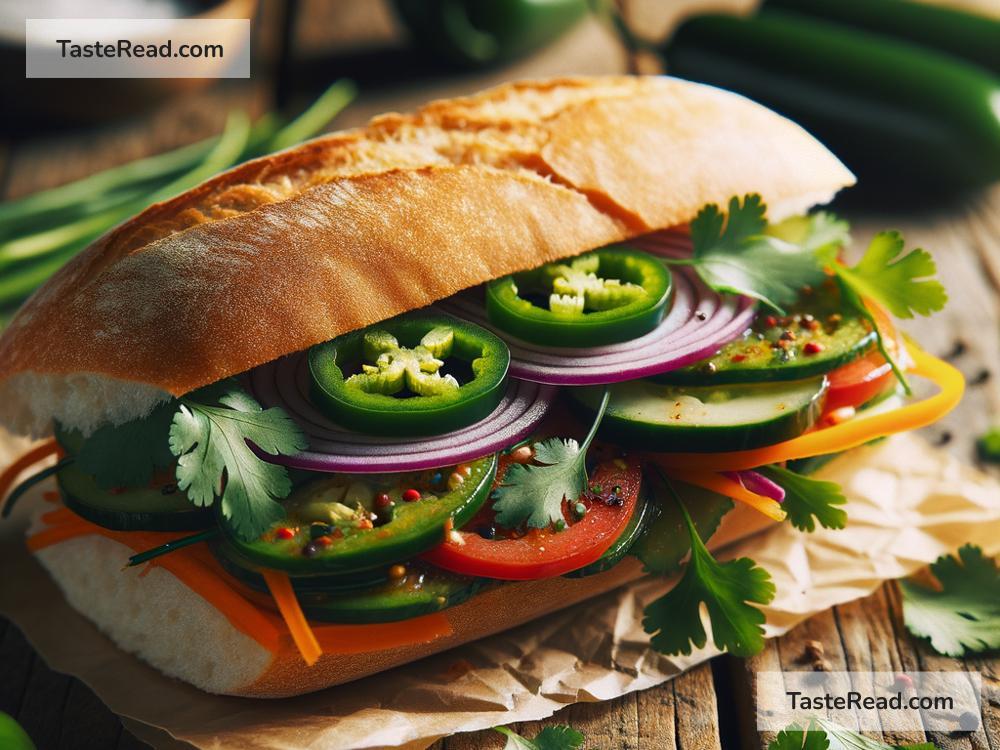Why Vietnamese Bánh Mì is a Flavorful Sandwich
If you’ve ever wandered the streets of Vietnam or ventured into a Vietnamese restaurant elsewhere in the world, chances are you’ve come across the bánh mì sandwich. This simple yet incredibly flavorful sandwich has won the hearts of many food lovers around the globe. But what exactly makes the bánh mì a culinary delight that stands out among other sandwiches? Let’s delve into the world of bánh mì and discover why it’s not just a sandwich but an unforgettable taste experience.
A Fusion of Cultures in Every Bite
The bánh mì is not just a testament to Vietnamese cuisine but a historical fusion of French and Vietnamese culinary traditions. During the French colonial period in Vietnam, the baguette was introduced to the Vietnamese, who then put their spin on this European staple. They combined the crispy French baguette with local ingredients and flavors, creating the bánh mì, a perfect blend of East meets West.
The Bread – The Foundation of Flavor
The heart of every bánh mì sandwich is the bread. Unlike the traditional French baguette, the Vietnamese version is made with a combination of rice and wheat flour. This unique mix gives the bread a lighter texture and a slightly crispy crust, making it the perfect vessel for the rich and diverse fillings. The slight crunch of the bread combined with its soft interior is the first step to creating the delightful sensory experience that is the bánh mì.
A Symphony of Fillings
What truly sets the bánh mì apart is its variety of fillings, catering to a wide array of tastes. From savory grilled pork, chicken, or beef to pâté, meatballs, and tofu for vegetarians, there’s a bánh mì for everyone. But it’s not just the main protein that makes the sandwich; it’s the combination of fresh and pickled vegetables—typically cucumber slices, cilantro, pickled carrots, and daikon radish—that add crunch and tanginess, balancing the hearty meat. The inclusion of chilies for those who seek a spicy kick and a spread of mayonnaise or a savory soy sauce blend ties all the flavors together, creating a sandwich that’s rich in both texture and taste.
The Art of Balance
Vietnamese cuisine is known for its focus on balance and the bánh mì is a prime example of this philosophy. Every component of the sandwich works in harmony, ensuring that no single flavor overshadows the others. The savory depth of the meat, the fresh crispness of the vegetables, the tangy zest of the pickles, and the spicy or creamy sauces come together to create a sandwich that’s is balanced and bursting with flavor in every bite.
A Reflection of the Local Palette
While the basic structure of the bánh mì remains consistent, it’s fascinating to see how it varies from region to region within Vietnam and around the world. Each place adds its unique twist, reflecting local tastes and ingredients. From the inclusion of scrambled eggs in some versions to different types of herbs and seasonings, the bánh mì is a canvas for culinary creativity and a mirror of the locale’s flavors.
More Than Just a Sandwich
The bánh mì is more than just a quick meal; it’s a cultural icon that tells a story of resilience, adaptation, and the fusion of cultures. It represents Vietnam’s history, its people’s creativity in making the most of available resources, and their openness to incorporating new elements into their culinary tradition. Enjoying a bánh mì is not just about savoring a delicious sandwich but appreciating the rich history and culture it embodies.
Conclusion
The Vietnamese bánh mì stands out as a flavorful, versatile, and balanced sandwich that delights taste buds worldwide. Its unique combination of textures and flavors, rooted in the fusion of French and Vietnamese culinary traditions, makes it more than just food—it’s an experience. Whether you’re biting into the crispy bread of a traditional pork bánh mì or exploring a local variant with unique fillings, the bánh mì offers a taste of Vietnam’s rich cultural tapestry in every bite. So next time you come across a bánh mì, remember, you’re not just enjoying a sandwich; you’re partaking in a delicious slice of history.


